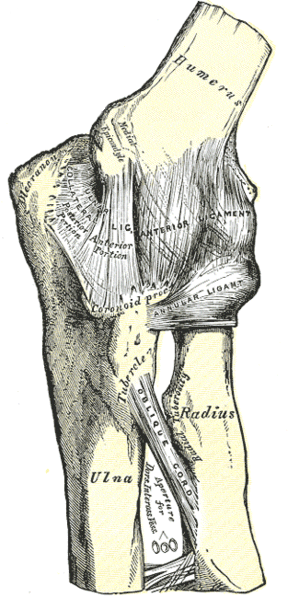Medial
Epicondylitis
(aka Golfer's Elbow)
 What is Medial
Epicondylitis?
What is Medial
Epicondylitis?
Medial Epicondylitis is a condition which arises through
overuse of the muscles used when moving the wrist downwards (wrist
flexion) or certain types of gripping actions with
the hand. The tendons at the wrist run up to the medial
epicondyle of the humerous at the
elbow, and the sheath that this tendon moves in becomes
inflamed when experiencing this condition. Eventually
this can lead to the development of scar tissue which will
also result in a weakening of the muscles.
What are the Symptoms
of Medial Epicondylitis?
Common symptoms include pain
on the inner side of the elbow and inside the bump of the
elbow, which is increased when bending the wrist down or
certain types of gripping actions. Making a fist can
also be painful. The fifth and fourth fingers may
experience numbness or tingling.
What Causes Medial Epicondylitis to
Develop?
Typically Medial Epicondylitis develops due to an overuse of
the muscles in the elbow which can lead to small tears in the
tendons, for example chopping wood, hammering nails, lifting
boxes, or swinging a golf club. Sometimes this condition can
also arise from a specific acute injury which results in
inflammation to the elbow.
What Movements Should be Avoided if you
have Medial Epicondylitis?
The best course of action is to try to avoid wrist flexion, Pronation
or Supination, and any activities which require significant
consistent grip (i.e. holding a baseball bat / golf club, rock
climbing, gripping a conventional mouse, etc.).
What Types of Products can be Used to
Help Prevent or Reduce the Symptoms and Incidence of
Medial Epicondylitis?
To help prevent wrist flexion, Articulating
Keyboard Arms or Adjustable
Height Workstations will ensure the proper height for
using keyboards and mice.
To assist in reducing pronation, consider Orthopedic
Mice or Vertical
Mice which reduce or eliminate the requirement to
pronate while mousing. Also consider Adjustable
Keyboards to reduce the degree of Pronation
required to keyboard.
To reduce repetitive grip activities arising from the Static
Grip Force on the mouse, consider alternatives to
conventional mice including Touchpads,
Trackballs
or Central
Pointing Devices.
Lifting and
repositioning of materials while the arm is extended can be
avoided by Writing
Surfaces, Document
Holders, Book
Holders.
